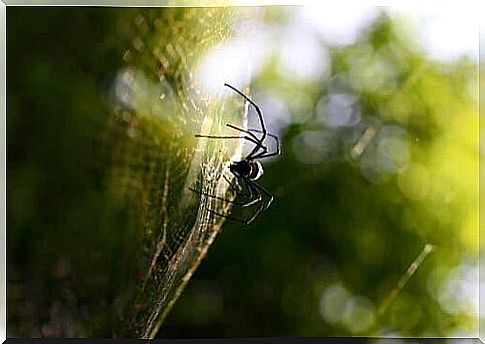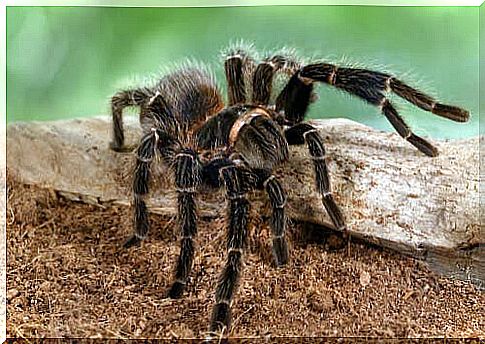The 3 Spider Hunting Techniques

One spider’s hunting methods have little or nothing to do with those of others. Each type of spider uses a specific method to obtain its favorite prey. So, we’ll look at the three spider hunting techniques that are the most common and what types of spiders use them.
Webs, one of the spider’s hunting techniques
Yes, this one is the most common – although it’s not the only one – but that’s not why it’s less spectacular. We are all tired of seeing cobwebs everywhere, and while removing them is very simple for us, the sticky silk they are made of is a big trap for most insects that touch them.
The spider remains in continuous contact with its web, waiting to attack as soon as it senses the slightest vibration in the net, which is possible due to the hypersensitive sensors present in its forelegs. When prey gets tangled up in the web, the spider attacks to add more silk and prevent the prey from escaping.
To name a few examples, the long-legged domestic spider, the tiger spider or the garden spider are some of those that build these impressive structures. Although all are made differently by species and have very different patterns, they usually have a funnel shape into which the prey ends up coiled.
When an insect lands on the web, it is taken to the spider’s lair so that it can calmly devour it while sucking its internal fluids. Although it may not seem like it, silk is a very strong protein fiber. Its strength is far superior to that of steel, so there is a lot of work being done today to try to manufacture this silk industrially so that it can be used in a multitude of fabrics.
The spiders that produce silk not only use it to hunt, but also to build their nests with this resistant material that also serves as a means of transport. Yes, you read that correctly: spiders use silk as parachutes and, on many occasions, are carried by the wind for miles, thus becoming colonizers of the most remote and distant islands.
jumping spiders
This type of spider is one of the most impressive because they are able to jump up to 50 times their body size, a distance they reach thanks to the fact that they are small and very strong species.

An example of a jumping spider is the species Portia fimbriata , which hunts its prey by launching itself at them with a huge leap. Its jump type varies according to the agility of the prey.
For example, if you are hunting a fly, the spider will jump as fast and explosively as possible, as well as calculating the direction the fly will take off in order to increase your chances of success. However, if the possible prey is slower, the spider may make a less spectacular leap.
Spiders that stalk their prey
Among the most famous spiders that stalk their prey are tarantulas or crabs and the wolf spider, scientifically known as lycosa . They are terrestrial spiders that build burrows directly in the ground, where they plan their hunting strategies.

The technique used by this type of arachnid is as follows: they make their lairs in strategic places where a large number of insects can pass and wait inside them until one of them comes within range. So they attack so fast that not even the fastest insect has a chance to escape.
This type of spider is usually portly and strong, capable of hunting small rodents, which it immobilizes with its large paws to inject a dose of venom that quickly kills its prey. Once it manages to kill the victim, it slowly devours it deep in its lair.









